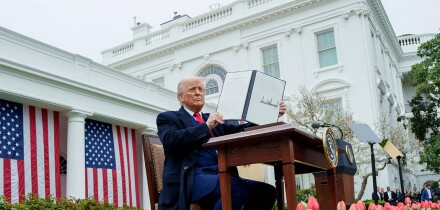China's B share markets have been the best performing market indices in the world so far this year with the Shanghai and Shenzhen indices having gained more than 80% and 100% respectively. This effect was primarily a result of structural changes in the market.
On Feb.18 China Securities Regulatory Commission announced the liberalization of the B share market. Previously it was illegal for local investors to gain access to Shanghai and Shenzhen's B shares markets because they are denominated in U.S. dollars and Hong Kong dollars respectively. Following the announcement turnover increased by more than 20 fold, toppling Hong Kong's turnover at one point, which is astonishing considering the Hong Kong stock market capitalization exceeds that of the B shares by more than 30 times. This was a direct result of B shares trading at large discounts to their A share dual listings. An expected second rush of liquidity on June 1 when new trading accounts, which were created following the announcement, were permitted to begin trading did not happen. This confirmed rumors that local investors had started trading straight away.
The next step forward toward a comprehensive equity market is to instigate the derivatives market. The first warrants on B shares since 1997 were introduced in May. Crédit Lyonnais issued a 30% in-the-money six-month call warrant on a basket of nine B share companies (both Shenzhen and Shanghai listed). Since there are no existing comparable derivative products, the primary difficulty with issuing the warrants was to decide at which level of volatility to issue them. When there are no existing comparables traders typically resort to using historical volatility as an indication of future volatility. However in the B share markets historical data proved irrelevant as the period from Feb. 18 represented a period of exceptional growth with a large discount to corresponding A shares driving the market.
The secondary difficulty is hedging the warrants. This is made difficult by the fact that the lack of an equity derivatives market means that only delta hedging is possible. Traders can only hedge their portfolio's gamma through the use of other options, which also has implications for vega hedging which, like gamma hedging involves the use of other options. Delta is the rate of change of the option price with respect to the price of the underlying asset, gamma is the rate of change of the portfolio's delta with respect to the price of the underlying asset and vega is the rate of change of the value of the portfolio with respect to the volatility of the underlying asset
The problem with delta hedging is inefficiency due to the frequent rebalancing necessary every time the market moves significantly. This can be costly in terms of leaving the issuer exposed to a gap risk, the risk associated with a particular position when the underlying stock has moved sufficiently to justify a rebalancing, and in terms of the high transaction costs involved. In China this effect of frequent rebalancing is particularly concentrated as the underlying indices exhibit historical volatility of over 50%.
China's securities regulations meant that several issues needed to be addressed before an equity-linked note issue could be made possible. The fact that listed or over-the-counter derivatives are not permitted in China means that all issues are executed offshore. Secondly in the case of the delivery of shares regulations do not permit the crossing of shares into an investor's account. As an alternative Crédit Lyonnais has created equity-linked notes containing all the economic fundamentals of the underlying stock redeemable in cash at any time during their life.
The Hong Kong, Shenzhen and Shanghai A and B shares markets account for more than USD1 trillion in market capitalization, making China the second largest stock market in Asia. With China's impending accession into the World Trade Organization now just around the corner we can expect to see a larger proportion of Chinese companies seeking stock market listing as they raise cash in order to compete with their foreign counterparts. This should increase overall market liquidity and increase the number of stocks suitable for the issue of derivatives. As the market grows in size we can also expect to see the demand for such products grow. Their uses range from that of cash extraction and ease of access to difficult markets to inexpensive leveraged exposure to potential volatility in a stock.
This week's Learning Curve was written by Vishal Tourani, equity derivatives analyst at Crédit Lyonnais in Hong Kong.
Derivatives Week is now accepting submissions from industry professionals for Learning Curve®, the tutorial for new or potential users of derivatives. For details and guidelines on writing a Learning Curve®, please call Jeremy Carter in London at 44-20-7303-1753 Matthew Tremblay in Hong Kong at 852-2912-8097 or Joseph Nadilo in New York at 212-224-3642, .






